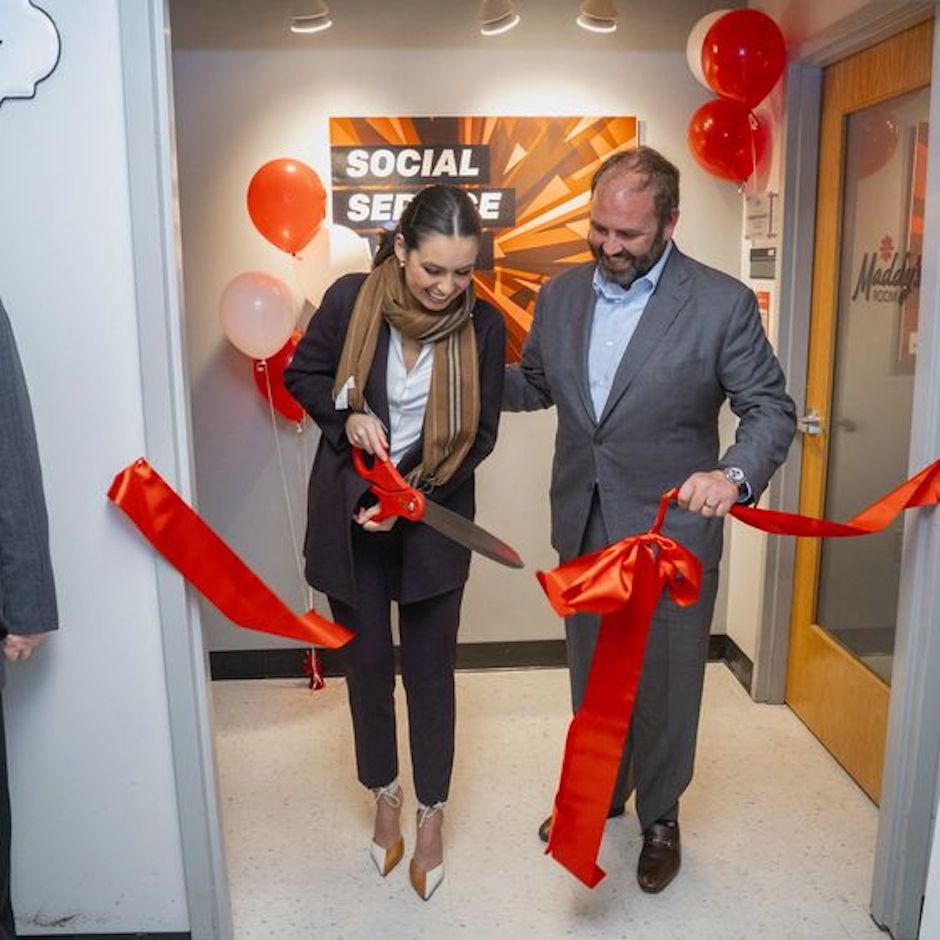On Dec. 6, the School of Social Work opened Maddy’s Room, a calming, sensory-friendly space for students who have autism spectrum disorder (ASD), in Ritter Hall Annex. Maddy’s Room is named for Madison Mulvey, daughter of Christopher M. Barnett, a member of the college's Board of Visitors whose recent $1 million donation funded Temple's Autism Lab.
“We don't want an autism diagnosis to be limiting,” Barnett said at the ribbon-cutting ceremony to launch Maddy’s Room. “If providing a room that allows a safe place and a sense of community when you feel overstimulated is what makes it so that you can attend college and get a degree, and get an education, we feel it's our job to provide that.”
Barnett’s daughter Madison, who was in attendance, is a college student who has ASD. A serial entrepreneur in the healthcare space, Barnett in 2020 created ABA Centers of America, which has expanded to eight states providing Applied Behavior Analysis-based treatment to children with autism and their families.
“We struggled, with the resources we have, to find access to a diagnosis, to any kind of care. What was born out of the frustration of two parents, in our living room, about wanting to do and give the best we could to our daughter, has now mobilized into a force that is making a real impact in the world,” Barnett said.
As a sensory room, Maddy’s Room is designed to offer a break from sensory overstimulation. It is sound-free, with dimmed mood lighting and heated, soft seating.
“We are very committed to advancing autism research, training, and education here within Temple University, and part of that is about advancing the supports available for students,” said Philip McCallion, director of the School of Social Work. “We wanted to create an opportunity for our students to have a place that is theirs.”
Jennifer Ibrahim, dean of the College of Public Health, said that there will be a Maddy’s Room in the college’s new building, Paley Hall, when it opens in 2025.
“Years ago, Temple had a campaign called ‘You're Welcome Here’ that focused on international students, making sure that all students were aware that this was a place where they could pursue their education. I see this as taking the next step,” Ibrahim said. "We’re not just thinking about diversity of students in terms of race, ethnicity, home country, but also about neurodiversity. We're making sure that everyone can see themselves in this space.”

